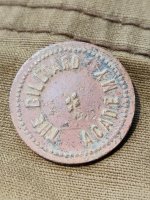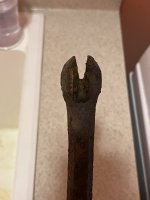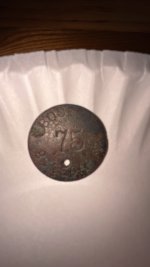indianajaune
Jr. Member
Hi everyone,
I found this thing a couple months ago while digging somewhere in Canada (10-20 cm deep underground). That's my first find ever! I'm sorry for the bad photo angle, I'm currently traveling and it's the only photo I have...
More details: Dug in the woods at a spot where chert flakes were found.
More photos as promised:
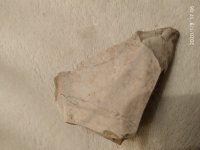
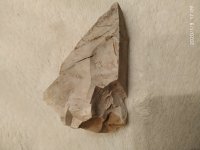
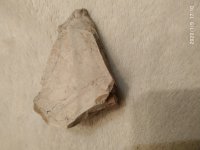
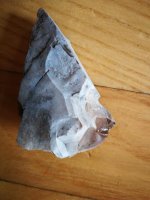
Length: 5-7 cm
Width: 3 cm
Height: 2-3 cm
I would really appreciate if someone could give me more information about this "tool" (I guess). It seems too big and too wide to be an arrowhead. My current guess is that they tried to make a "tool" out of it, it broke and they threw it away. Finally, I think it's made in chert, but I still don't know what kind of chert they used? (green, blue, etc.) Also, when was it made?
Thanks and I hope you all have a wonderful day.
Note to reader: my English is pretty bad since it's not my primary language. Sorry for any typos you may find above.
I found this thing a couple months ago while digging somewhere in Canada (10-20 cm deep underground). That's my first find ever! I'm sorry for the bad photo angle, I'm currently traveling and it's the only photo I have...

More details: Dug in the woods at a spot where chert flakes were found.
More photos as promised:




Length: 5-7 cm
Width: 3 cm
Height: 2-3 cm
I would really appreciate if someone could give me more information about this "tool" (I guess). It seems too big and too wide to be an arrowhead. My current guess is that they tried to make a "tool" out of it, it broke and they threw it away. Finally, I think it's made in chert, but I still don't know what kind of chert they used? (green, blue, etc.) Also, when was it made?
Thanks and I hope you all have a wonderful day.

Note to reader: my English is pretty bad since it's not my primary language. Sorry for any typos you may find above.
Last edited:
Upvote
0





